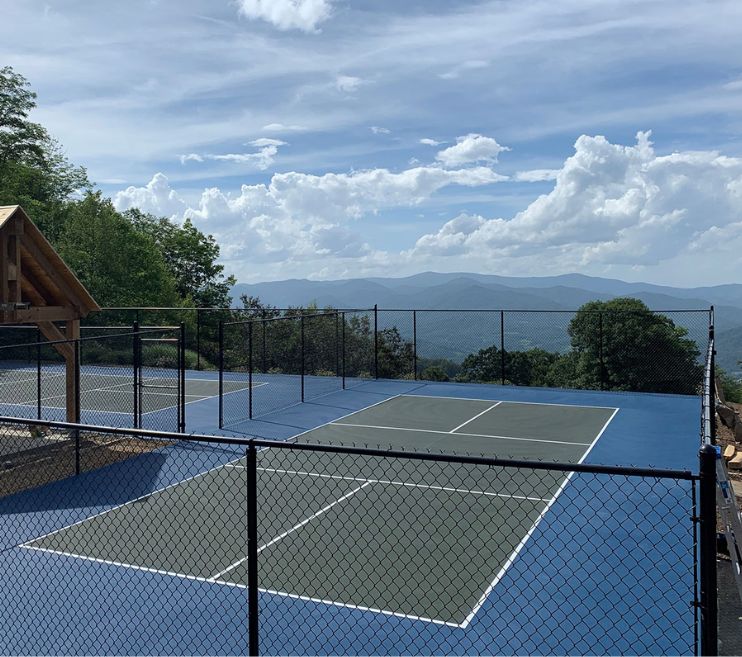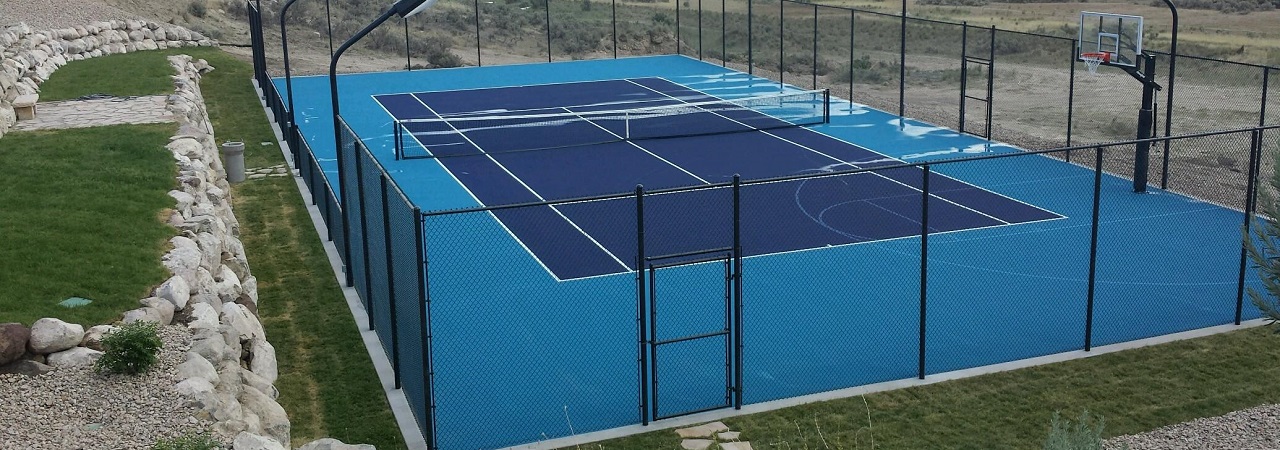A Comprehensive Overview to Creating the Perfect Pickleball Court for All Skill Degrees
Designing a pickleball court that caters to players of varying skill levels requires a multifaceted strategy, incorporating crucial components such as court dimensions, surface materials, and ease of access functions. What particular considerations must be prioritized to make sure a successful execution?

Recognizing Court Capacities
Understanding the measurements of a pickleball court is vital for both gamers and designers, as these requirements make sure a reasonable and constant playing experience. A typical pickleball court determines 20 feet broad by 44 feet long for both songs and doubles play. The court is separated right into two equivalent halves by a web that stands 36 inches high at the sidelines and 34 inches at the center.
Key attributes of the court include the non-volley zone, frequently referred to as the "cooking area," which expands 7 feet from the web on both sides. This location is critical for managing gamer motion and volleying, making certain calculated play. Furthermore, the solution areas on each side of the court are necessary, measuring 10 feet broad and 15 feet deep, created to suit appropriate offering techniques.
Surrounding the court, an area of at the very least 10 feet need to be assigned as the safety area, enabling gamers ample space to move and protect against injuries during play. Abiding by these measurements not just fosters fair competition yet also promotes safety and security and enjoyment for all participants, making it crucial for any pickleball court style.
Choosing the Right Surface
The option of playing surface area for a pickleball court significantly influences the game's characteristics and gamer experience. Picking the appropriate material is vital for ensuring player performance, convenience, and safety and security. Usual surface areas consist of asphalt, concrete, and specialized sporting activities floor covering.
Asphalt is a preferred selection as a result of its cost and resilience. It offers a consistent playing surface yet can be hard on joints over prolonged play. Concrete, while similar in durability, uses very little flexibility, possibly resulting in raised influence on players' bodies.
For a much more cushioned experience, many facilities select specialized sports floor covering, such as modular floor tiles or artificial surface areas. These products usually consist of shock-absorbing properties, lowering the threat of injuries and improving player convenience. Such surface areas can enhance ball bounce uniformity, which is vital for fair play.
When picking a surface, consider aspects such as climate, upkeep needs, and the intensity of play. An appropriate surface not just improves gameplay but likewise contributes to the long life of the court itself. Eventually, understanding the subtleties of different products will help in creating an optimum pickleball atmosphere customized to different skill levels.
Optimal Court Design
An optimum court design is important for maximizing both player efficiency and spectator pleasure in pickleball. The measurements of a conventional pickleball court are 20 feet wide by 44 feet long for increases play, preserving a clear border that boosts gameplay. The web, placed at 36 inches high at the sidelines and try this 34 inches in the center, is critical for maintaining the dynamics of the game.
Integrating assigned areas around the court for gamers to relocate freely is essential. A minimum of 10 feet of clearance on all sides of the court is suggested to stop collisions and supply space for spectators. Furthermore, positioning plays a substantial role; the court needs to ideally be lined up north-south to minimize the effect of sun glare on players throughout peak hours.
Reliable viewer positioning is just as important. Raised seeing areas or bleachers positioned behind the sidelines can enhance the experience while making certain safety and security. Last but not least, visible and clear court markings aid in gameplay, with contrasting colors for boundaries and non-volley zones that delineate over here crucial locations for gamers. On the whole, a properly designed court design promotes an engaging environment for both gamers and viewers.

Access Considerations
When making a pickleball court, making sure accessibility for all players, consisting of those with impairments, is extremely important. A thoughtfully created court can foster inclusivity and encourage involvement from people of varying capacities.

Access routes to the court should likewise be very carefully prepared. Make sure that paths resulting in the court are broad enough for wheelchair users and are equipped with ramps where necessary. Signage should be clear and large sufficient to be conveniently checked out.
Moreover, seating areas should be designed to enable very easy accessibility to and from the court. This includes offering designated rooms for spectators who might have mobility obstacles.
Last but not least, make sure that washroom facilities neighboring fulfill availability criteria. By taking into consideration these aspects, you can create a pickleball court that rates and useful for everybody, thus advertising a vibrant and varied neighborhood of gamers.
Upkeep and Maintenance
Proper upkeep and maintenance of a pickleball court are necessary for making certain optimal having fun conditions and prolonging the life-span of the facility. Regular examinations ought to be conducted to identify and attend to any problems or wear, such as splits in the surface or loosened netting. These issues, if left neglected, can negatively look at here influence gameplay and safety.
Surface area maintenance is critical; courts must be cleansed often to get rid of debris, leaves, or dust that can influence traction. For tough courts, periodic pressure cleaning is advised to keep surface honesty and aesthetic appeals. If your court is made of softer materials, such as asphalt, resurfacing or securing may be needed to shield versus weather-related wear.
Furthermore, internet height and tension ought to be inspected consistently, as incorrect setups can alter gameplay. Maintaining surrounding areas, including fence and lights, is just as essential for making sure a safe and delightful setting.
Verdict
In conclusion, the design of a suitable pickleball court demands a meticulous method that includes appropriate measurements, suitable surface materials, and thoughtful layout. Pickleball court contractor. Guaranteeing availability for all gamers and viewers is vital for cultivating a comprehensive environment. Regular maintenance is important for sustaining court quality and safety. By sticking to these standards, the best pickleball court can be produced, promoting enjoyment and athletic development for gamers of differing ability levels.
Designing a pickleball court that caters to gamers of varying skill degrees requires a multifaceted strategy, including vital elements such as court measurements, surface area materials, and availability functions.Understanding the measurements of a pickleball court is essential for both players and developers, as these specifications guarantee a constant and reasonable playing experience.The choice of playing surface for a pickleball court significantly affects the video game's dynamics and gamer experience.An ideal court format is vital for making best use of both player efficiency and viewer pleasure in pickleball. By sticking to these guidelines, the ideal pickleball court can be developed, promoting satisfaction and athletic development for players of differing skill levels.
Comments on “Leading Tips for Picking a Pickleball Court Contractor for Your Home Installation”